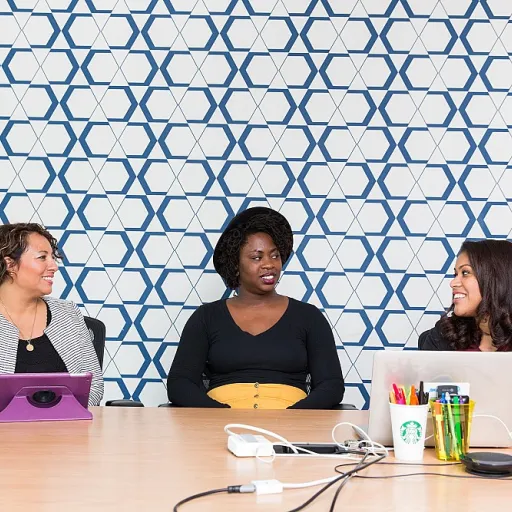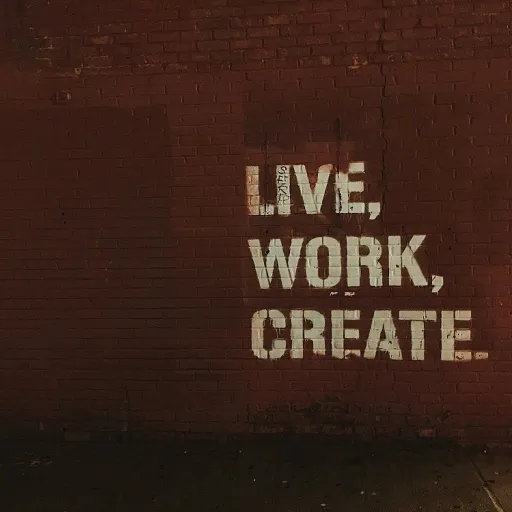
Understanding the roots of the skills gap
Why the Skills Gap Persists Across Countries
The skills gap is a complex challenge affecting both high and low income countries. At its core, it’s about the mismatch between what people learn—whether in primary school, high school, or college—and the skills employers need for today’s jobs. This gap is not just a local issue; it’s a global concern that impacts development, economic growth, and even responses to climate change.
Many factors contribute to the persistence of the skills gap:
- Quality education: Not all schools and programs provide the same learning opportunities. In some developing countries, access to quality education is still limited, especially for children and youth in rural or marginalized communities.
- Changing job markets: As industries evolve, especially with technology and climate change, the demand for new skills grows faster than education systems can adapt.
- Learning outcomes: Even when children attend school, the outcomes may not match the needs of employers. This is true for both primary education and higher education, where practical training is sometimes lacking.
- Financing and resources: Many countries struggle with financing education, which affects the quality of teaching, school infrastructure, and access to programs that support early childhood development and lifelong learning.
- Impact of the covid pandemic: The pandemic disrupted learning globally, widening existing gaps and making it harder for students to gain the skills needed for success.
Understanding these roots is key to finding solutions. For example, understanding the screening interview can help students and job seekers recognize what employers are really looking for, which is a first step in bridging the gap. The next sections will explore how education shapes employability, the importance of lifelong learning, and practical ways to develop the skills needed for better opportunities.
How education shapes employability
Education as a Foundation for Employability
Education is widely recognized as a key driver for employability and long-term success. Across countries, the quality of learning opportunities—starting from early childhood development through to higher education—directly shapes the skills and competencies that students bring to the workforce. When schools and colleges provide access to quality education, they lay the groundwork for children and youth to develop critical thinking, communication, and technical abilities that employers value.
In developing countries, the challenge is often twofold: ensuring access to education and improving learning outcomes. Many children, especially in low-income countries, still face barriers to attending primary school or completing secondary education. The covid pandemic further disrupted schooling, highlighting the urgent need for resilient education systems and better financing for programs that support childhood development and lifelong learning.
How Learning Opportunities Influence Skills Development
The link between education and skills development is clear. Quality education programs, whether in primary school, high school, or tertiary education, equip students with both foundational knowledge and practical skills. These learning experiences are essential for adapting to a rapidly changing global job market, where new technologies and climate change are reshaping the types of skills in demand.
- Primary and secondary schools build literacy, numeracy, and social skills.
- Colleges and vocational training programs offer specialized knowledge and hands-on experience.
- Higher education and lifelong learning help people stay relevant as industries evolve.
For many, access to education is the first step toward breaking cycles of poverty and unlocking better job prospects. However, the quality of education matters just as much as access. Programs that focus on real-world applications and encourage continuous learning are more likely to produce graduates who are ready for the workforce.
To explore more about how engaging learning environments can help bridge the skills gap, read this article on enhancing engageability in education.
The role of lifelong learning in staying relevant
Adapting to Change Through Ongoing Learning
In today’s rapidly evolving world, the concept of lifelong learning has become essential for both individuals and societies. The pace of technological advancement, the impact of climate change, and the aftermath of the covid pandemic have all accelerated the need for continuous skill development. No longer is education confined to primary school, high school, or even college. Instead, people must embrace learning opportunities throughout their lives to remain relevant and competitive in the global workforce.
Lifelong learning is not just about formal education or returning to school. It encompasses a wide range of activities, including online courses, workplace training programs, and informal self-directed study. This approach is particularly important in developing countries, where access to quality education and training can be limited. By supporting ongoing learning, countries can help children, youth, and adults adapt to changing job markets and improve their quality of life.
- Learning outcomes are stronger when people have access to diverse educational programs, including vocational and technical training.
- Early childhood development lays the foundation for lifelong learning, but ongoing skill development is key to long-term success.
- Higher education and tertiary education institutions play a role, but so do community centers, online platforms, and workplace initiatives.
- Financing and policy support are crucial for making lifelong learning accessible, especially in low and middle-income countries.
For students and workers alike, adapting to new technologies and global trends requires a mindset of continuous improvement. Schools and colleges are increasingly integrating practical skills and digital literacy into their curricula, but individuals must also take responsibility for their own development. This is where access to quality education and flexible learning programs becomes a key success factor.
Organizations and governments are recognizing the importance of lifelong learning in bridging the skills gap. For example, effective collaboration between education providers and employers can ensure that training programs align with real-world needs. Effective collaboration in retail partnerships demonstrates how ongoing learning and adaptation can drive better outcomes for both businesses and employees.
Ultimately, lifelong learning empowers people to respond to new challenges, whether they stem from technological change, economic shifts, or global crises. By fostering a culture of continuous education, societies can unlock pathways to success for all, including children, youth, and adults across different income countries.
Bridging the gap with practical skills
Why Practical Skills Matter in Today’s Job Market
In the current global landscape, employers are searching for people who can apply knowledge to real-world situations. While foundational education in primary school, high school, and college is crucial, practical skills are often what set candidates apart. These skills—like problem-solving, teamwork, digital literacy, and communication—are essential for success in both developed and developing countries. They help bridge the gap between what students learn in school and what employers need in the workplace.
Integrating Practical Learning into Education
Many schools and higher education institutions are now focusing on programs that combine academic knowledge with hands-on experiences. This includes internships, apprenticeships, and project-based learning. Such approaches not only improve learning outcomes but also give students a better understanding of workplace expectations. In developing countries, access to quality education and practical training is especially important for children and youth to improve their future income and development prospects.
- Internships and apprenticeships: Offer real-world experience and help students apply classroom learning.
- Project-based learning: Encourages teamwork and problem-solving, skills valued by employers globally.
- Technical and vocational education: Provides targeted training for specific industries, supporting key success in employment.
Adapting to Change: The Need for Continuous Skill Development
The covid pandemic highlighted the importance of adaptability and lifelong learning. As industries evolve and climate change impacts economies, people need ongoing training to stay relevant. Quality education programs, including those at the tertiary education level, must adapt to offer flexible learning opportunities for all, from early childhood development to adult upskilling. This is especially true in low-income countries, where access to education and financing for training can be limited.
Measuring Success: From School to the Workplace
Ultimately, bridging the skills gap requires a focus on both academic achievement and practical abilities. Schools, colleges, and training programs should work together to ensure students and children are not only gaining knowledge but also developing the skills needed for success in a changing world. By prioritizing access to quality education and practical learning, countries can better prepare their people for the demands of the global workforce.
Overcoming barriers to education and training
Addressing Access and Equity Challenges
Many people face significant obstacles when trying to access quality education and training. These barriers can be especially pronounced in developing countries, where financing, infrastructure, and resources are often limited. Even in higher income countries, disparities in access to quality education persist, affecting children, youth, and adults alike.
- Financial barriers: The cost of college, tertiary education, and even some training programs can be prohibitive for students from low-income backgrounds. Scholarships, government funding, and affordable programs are essential for widening access.
- Geographic disparities: Rural areas and remote communities may lack primary schools, high schools, or higher education institutions, limiting learning opportunities for children and youth. Digital learning and mobile training programs can help bridge these gaps.
- Quality concerns: Access to education is not enough; the quality of schools and programs is crucial for better learning outcomes. Investments in teacher training, curriculum development, and school infrastructure are key success factors for effective education skills development.
- Social and cultural factors: In some countries, girls, children with disabilities, or marginalized groups face additional challenges in accessing education and training. Inclusive policies and targeted support can help ensure all students benefit from learning opportunities.
- Impact of global crises: The covid pandemic highlighted how quickly access to education can be disrupted. School closures affected millions of children and youth, especially in developing countries. Recovery efforts must focus on restoring and improving access quality for all learners.
Innovative Solutions for Inclusive Learning
To overcome these barriers, countries and organizations are developing new approaches to education and training. Early childhood development programs, flexible learning pathways, and lifelong learning initiatives help people of all ages build skills for success. Partnerships between schools, employers, and communities can create more relevant and practical learning experiences, preparing students for the demands of a changing global economy, including challenges like climate change.
Ultimately, education is key to unlocking better opportunities and bridging the skills gap. By addressing access and equity issues, we can ensure that more people have the chance to develop the skills they need for personal and professional development.
Building a personal roadmap for skill development
Setting Clear Goals for Your Skill Journey
Creating a personal roadmap for skill development starts with understanding your own strengths and areas for growth. Reflect on your current education and learning experiences, whether from school, college, or workplace training. Identify which skills are most in demand in your field and which ones you need to improve. This self-assessment is key to making informed decisions about your next steps.
Choosing the Right Learning Opportunities
With so many programs and courses available, it’s important to select those that match your goals and learning style. Look for quality education options, including online courses, vocational training, or higher education programs. In many countries, especially developing countries, access to quality education can be a challenge, but digital platforms are making it easier for people to learn new skills from anywhere. Consider both formal education like tertiary education and informal learning, such as workshops or community programs.
Building Skills for a Changing World
Today’s job market is shaped by rapid changes, including the impact of climate change and the effects of the covid pandemic. Lifelong learning is essential to stay relevant. Seek out learning opportunities that focus on practical skills and adaptability. For students and children youth, early childhood development and primary school lay the foundation, but ongoing development is crucial at every stage, from high school to college and beyond.
- Set short-term and long-term learning goals
- Track your progress and celebrate achievements
- Seek feedback from mentors, teachers, or peers
- Adjust your roadmap as your interests and the job market evolve
Overcoming Barriers and Accessing Resources
Barriers like financing, access education, and limited programs can make skill development harder, especially in low income countries. Explore scholarships, free online resources, and community initiatives that support education skills. Schools and organizations often offer support for students and adults looking to improve their skills. Remember, persistence and creativity are key success factors in overcoming obstacles.
Making Learning a Lifelong Habit
Quality education is not just about formal schooling. Lifelong learning means staying curious and open to new experiences. Whether you’re a child in primary school or an adult seeking better job prospects, continuous development is essential. By building your own roadmap, you take control of your learning outcomes and set yourself up for success in a global economy.












